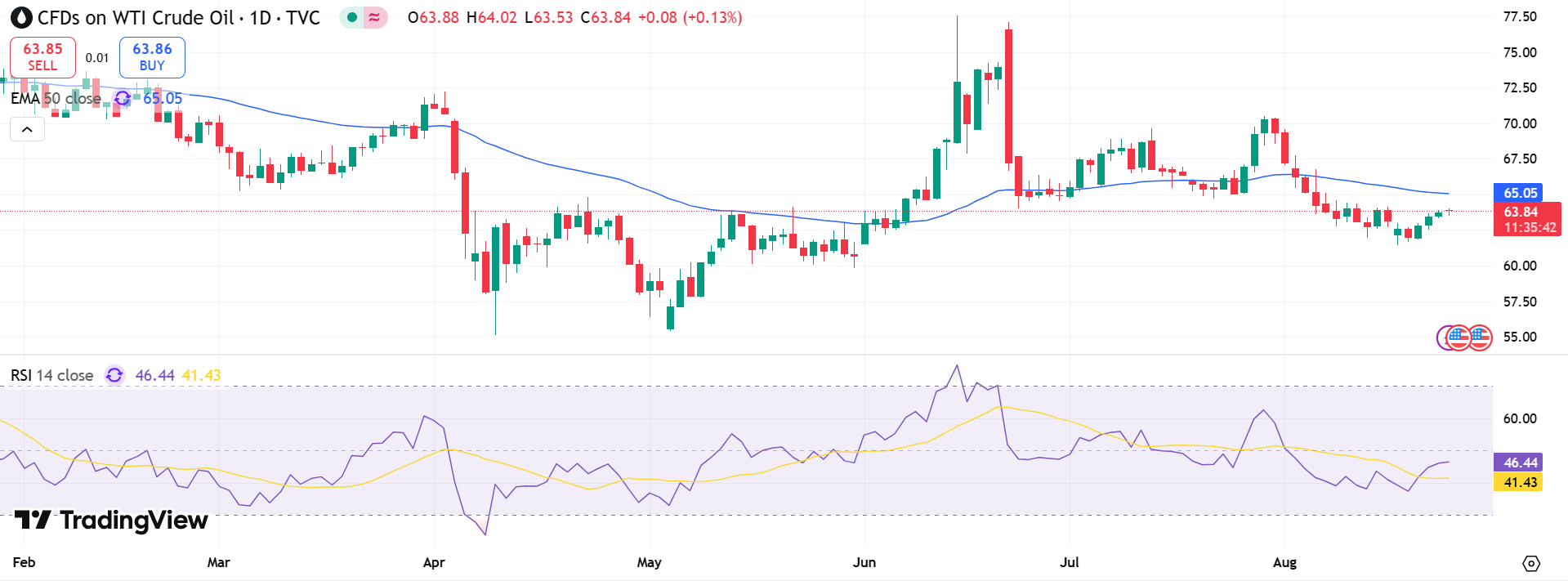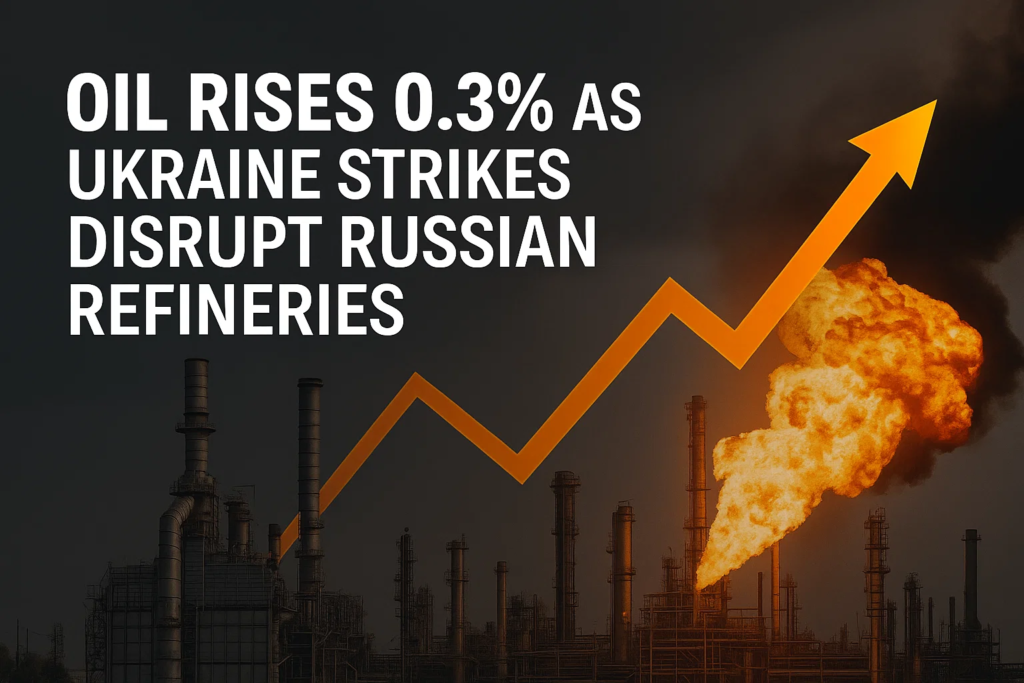Oil prices edged higher Monday as renewed Ukrainian drone attacks on Russian energy facilities reignited fears of supply disruptions. Brent crude gained 0.19% to $67.86 a barrel, while West Texas Intermediate (WTI) rose 0.24% to $63.81 by 06:56 GMT.
The attacks sparked fires at multiple energy installations. A blaze broke out at Russia’s Ust-Luga fuel export terminal, while the Novoshakhtinsk refinery—processing 100,000 barrels per day—remained ablaze for a fourth day. In addition, capacity was sharply reduced at one of Russia’s largest nuclear power plants following drone strikes.
Analysts say Ukraine’s success in targeting energy infrastructure has shifted risks to the upside for crude. “The risks for crude oil are moving higher,” noted Tony Sycamore, IG market analyst.
Key developments:
- Fire at Ust-Luga fuel terminal disrupted exports.
- Novoshakhtinsk refinery fire burned for four consecutive days.
- Reactor output cut at a major Russian nuclear facility.
Geopolitics Add Fresh Volatility
Geopolitical uncertainty extended beyond the battlefield. U.S. Vice President JD Vance said Russia had made “significant concessions” in negotiations, acknowledging that Kyiv would retain sovereignty and require security guarantees.
At the same time, President Donald Trump warned of new sanctions if Moscow fails to show progress toward peace within two weeks. The mixed signals have left oil markets struggling to balance risk premiums with broader economic concerns.
While expectations for a Federal Reserve rate cut next month typically bolster commodities by supporting growth, traders remain cautious. “Markets appear more concerned that Trump’s tariffs could weigh on global growth, keeping oil prices capped,” said Priyanka Sachdeva, senior analyst at Phillip Nova.

Fed Outlook Supports Demand Hopes
Investor sentiment improved after Fed Chair Jerome Powell signaled the central bank is preparing for a potential rate cut in September. The shift has encouraged risk-taking across commodities, with oil supported by the twin drivers of tighter supply and stronger demand prospects.
ANZ analysts noted that “a risk-on tone across markets boosted appetite across the commodities complex, aided by renewed supply-side issues across energy and metals.”
Still, gains in crude remain modest as traders await clarity on both U.S. monetary policy and geopolitical developments in Eastern Europe. For now, the combination of Ukrainian strikes and a dovish Fed has injected fresh volatility into energy markets.


